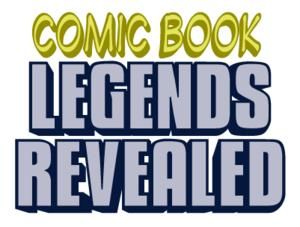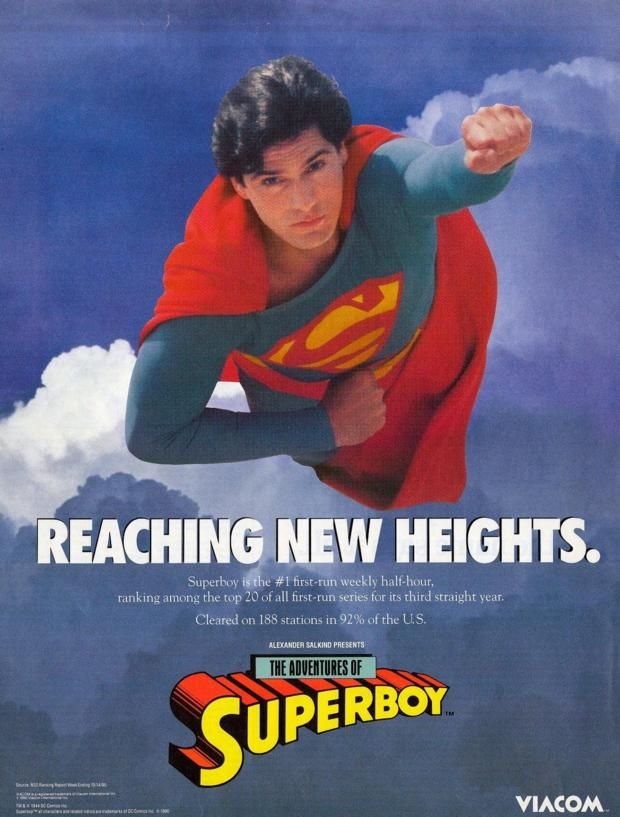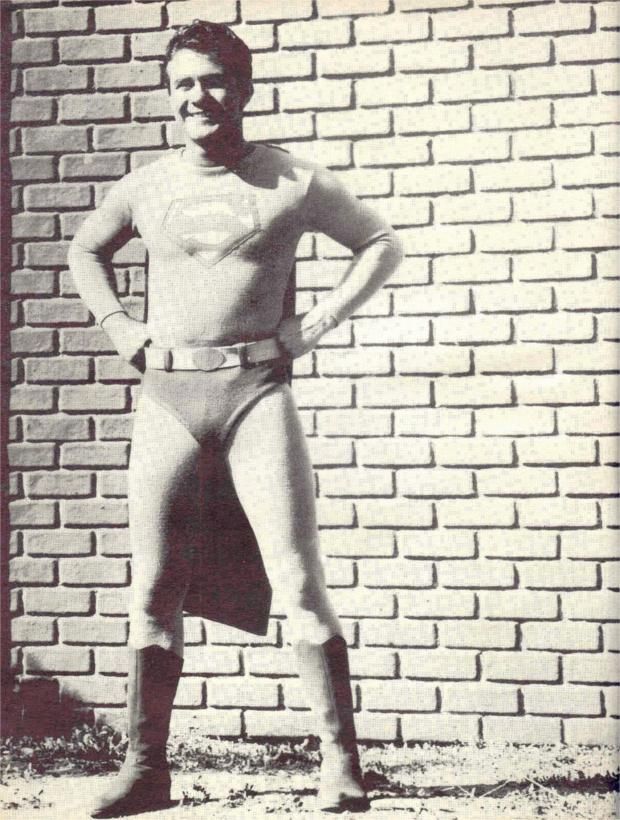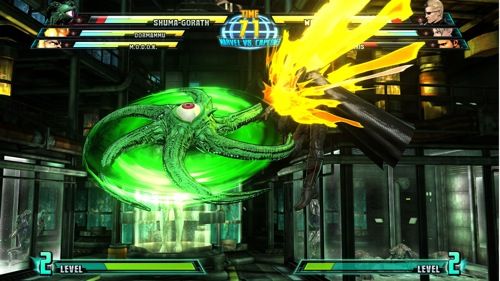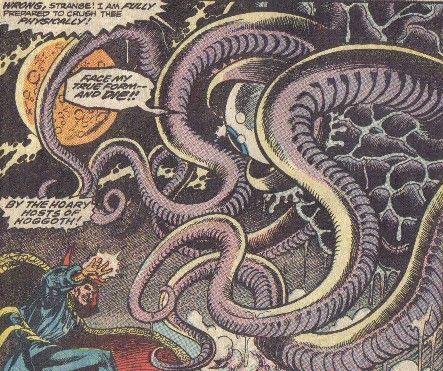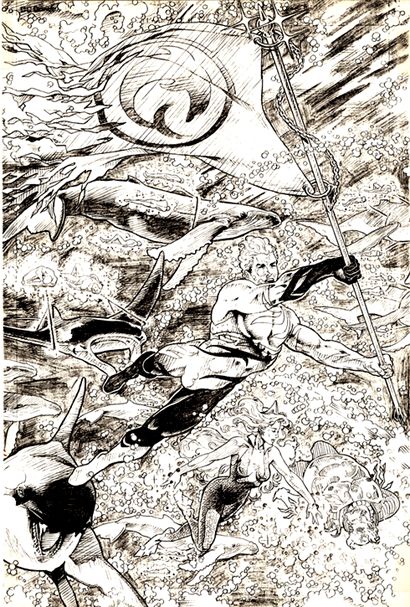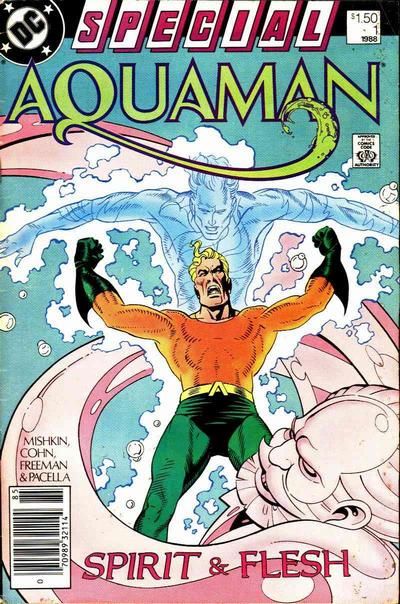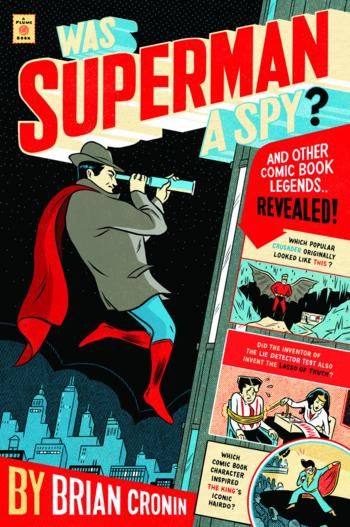Welcome to the three hundredth and forty-third in a series of examinations of comic book legends and whether they are true or false. This week, learn about the Superboy TV series that would have pre-dated Smallville by forty years! Plus, the strange history of Shuma-Gorath and the sad (for fans) story of the Aquaman II mini-series that never was.
Click here for an archive of the previous three hundred and forty-two.
Let's begin!
COMIC LEGEND: There was nearly a Superboy TV series in the 1960s!
STATUS: True
Years before Tom Welling first bared his chest on the TV screen in Smallville...
or Superboy flew the skies in the late 1980s/early 1990s syndicated series...
there was nearly a Superboy TV series in the 1960s!!
You see, as soon as The Adventures of Superman TV series officially ended with George Reeves' death, Whitney Ellsworth (the DC editor who became the main producer of the Superman TV series) tried to come up with a follow-up series.
Eventually, he pitched and produced a pilot for The Adventures of Superboy in 1961.
The Amazing World of DC Comics #2 had a picture of Johnny Rockwell as Superboy/Clark Kent...
That same issue also listed the names of the 12 additional scripts ordered for the series besides the pilot ""Rajah's Ransom" (with the notion that if the pilot WAS picked up, they'd want to get into production right away)....
However, the series was not picked up and viewers would have to wait nearly 30 years to see Superboy reach the small screen.
COMIC LEGEND: Robert E. Howard created Shuma-Gorath.
STATUS: False Enough for a False
Reader Joe C. wrote in with a question about the character Shuma-Gorath, who has become somewhat famous due to his strange inclusion as a part of the video game Marvel vs. Capcom...
Joe wanted to know why was it that Marvel was able to own the rights to Shuma-Gorath even though they no longer have the Robert E. Howard license. As he asks, "How is it that Shuma-Gorath is basically considered a Marvel Comics character; wasn't he created by Robert E. Howard for a Kull story?"
The answer is interesting, Joe. You see, while yes, Robert E. Howard did, indeed, come up with the name Shuma-Gorath in a Kull story "The Curse of the Golden Skull,"(that went unpublished until 1967, looooooooooong after Howard's death), it was ONLY a name. A character mentions the "iron-bound books of Shuma-Gorath" in the tale.
And yes, Gardner Fox later used that name for an unseen villain in an issue of Marvel Premiere starring Doctor Strange (#5) and then Steve Englehart later actually introduced the memorable Doctor Strange villain a few issues later when he came aboard as the writer of the title....
But while the name was clearly based on the name in the Howard story (especially since it was written by Gardner Fox, a notable fan of fantasy pulp fiction), there's a hitch.
You see, you can't copyright just a name.
Thus, Marvel owns the actual character that they introduced using the name Shuma-Gorath.
That's just a legal right, which is why I said "false enough," because you could easily argue that you think creating the name still counts as creating Shuma-Gorath.
So there ya go, Joe! Thanks for the question!
COMIC LEGEND: There was going to be a sequel to the 1986 Neal Pozner/Craig Hamilton Aquaman mini-series.
STATUS: True
In 1986, DC released a mini-series that saw a major shift in Aquaman's status quo, including a brand-new costume!
The series was written by Neal Pozner and was penciled by Craig Hamilton, who was only 20 years old at the time! It was on our list of The Greatest Aquaman Stories Ever Told (which you can read here).
The series was a success, so fans rightly expected to hear more from the series.
In the 1986 Amazing Heroes Preview Special, details for a sequel to the series were released. Here is a snippet:
After the phenomonal response to DC's first Aquaman series, a sequel seemed a foregone conclusion. Well, here it is. The second mini-series will lake place minutes after the first one ends, and will deal with the rest of the "Aquaman Family," as well as the star of the book. "Mera, Aqualad, and the rest of Atlantis did not show up much in the first series," notes writer Neal Pozner, 'but they're very important to this series. In the first series, we were trying to change and restructure Aquaman alone. Now we'll see how he's going to react to everybody else. The whole theme of the series is change, and how different people react to it. There have been radical changes in the lives of all the players, and we'll be looking at how those changes manifest themselves, and how each character deals with them. The three main characters will be Aquaman, Mera, and Aqualad, but we'll also be focusing on Makaira, Vulko, anew character named Tawna, Ronal, and (from Swamp Thing) the Sunderland Corporation."
As the series begins, we will find that Makaira (Vulko's wife), is ruling Atlantis in his stead, as he was injured in the fight with Ocean Master. Atlantis is going through a culture shock, as they have been isolated for two thousand years, and now they are interacting with the surface world. The surface world is finding that Atlantis is a great place to get rid of all the stuff it doesn't need and to get all the technology that they do need. Some Atlanteans are so taken with these new ideas, that they'll accept anything. "So they've got hula-hoops and Pac-Man and disco clothes that they're using underwater. There is even a fast-food restaurant that has been opened by the Sunderland Corporation, and the religious zealots use that as a focus for their protests against the surface worlds' imports. Makaira is caught between the religious zealots and the other Atlanteans, in her attempt to rule Atlantis."
Aquaman, meanwhile, is trying to deal with the fact that he loves his wife, and, he also seems to love another woman. Also, every rule he's ever lived by, he doesn't believe in anymore, and he will catch himself reverting back to his old actions. "This is not going to be the pat super-hero-gets-a-cosmic-revelation. When he gets mad, he'll lose his temper, except he'll catch himself midway through. Mera is going to have a really hard time also, because the man she married is not the man that returns to her. She's going to have a hard time trying to help. because she was raised having everything she wanted!' When Aquaman returns to New Venice, he finds that Mera has basically saved the whole town by herself. "Mera will be portrayed more heroically. In her own way, she is more powerful than Aquaman."
Aqualad will still be mourning Aquagirl's death, and he will retreat from the surface world to Atlantis. He eventually meets a young girl named Tawna. whom he will fall in love with. "The focus of the series is primarily on Aquaman, Aqualad, and Atlantis, but there will be all these subplots running along in the background."
Sounds cool!
However, as Hamilton related to Rob Kelly at the great Aquaman Shrine a few years back, Hamilton quickly fell behind schedule on the second mini-series. The first series saw four issues drawn in eight months or so. On the second one, Hamilton only did a handful of pages in two months. I don't believe Pozner even plotted past #2, so it was not like he was pushing the series hard, either.
DC even asked Jerome K. Moore to try to help out by drawing some pages in Hamilton's style...
Ultimately, it appears as though DC just got impatient, especially since they really wanted to get Aquaman back to his old costume (Pozner was forced to include a return to the old costume in the script for Aquaman II). So instead, in 1988, Gary Cohn and Dan Mishkin (along with artists George Freeman and Mark Pacella) did a one-shot where Aquaman's original costume returned and some of the plots from the Pozner/Hamilton mini-series were resolved.
Once that was done, the sequel was never to be.
It's a real shame. Check out the Aquaman Shrine here to read more from the Amazing Heroes Preview Special. And heck, just read the Aquaman Shrine period. If you like Aquaman, you will love the Aquaman Shrine!
Thanks to Rob Kelly for the great collection of info (he also posted the Moore page).
Okay, that's it for this week!
Thanks to the Grand Comics Database for this week's covers! And thanks to Brandon Hanvey for the Comic Book Legends Revealed logo!
Feel free (heck, I implore you!) to write in with your suggestions for future installments! My e-mail address is cronb01@aol.com. And my Twitter feed is http://twitter.com/brian_cronin, so you can ask me legends there, as well!
Follow Comics Should Be Good on Twitter and on Facebook (also, feel free to share Comic Book Legends Revealed on our Facebook page!). If we hit 3,000 likes on Facebook you'll get a bonus edition of Comic Book Legends the week after we hit 3,000 likes! So go like us on Facebook to get that extra Comic Book Legends Revealed! Not only will you get updates when new blog posts show up on both Twitter and Facebook, but you'll get original content from me, as well!
Also, be sure to check out my website, Legends Revealed, where I look into legends about the worlds of entertainment and sports, which you can find here, at legendsrevealed.com.
Here's my book of Comic Book Legends (130 legends - half of them are re-worked classic legends I've featured on the blog and half of them are legends never published on the blog!).
The cover is by artist Mickey Duzyj. He did a great job on it...(click to enlarge)...
If you'd like to order it, you can use the following code if you'd like to send me a bit of a referral fee...
Was Superman a Spy?: And Other Comic Book Legends Revealed
See you all next week!

